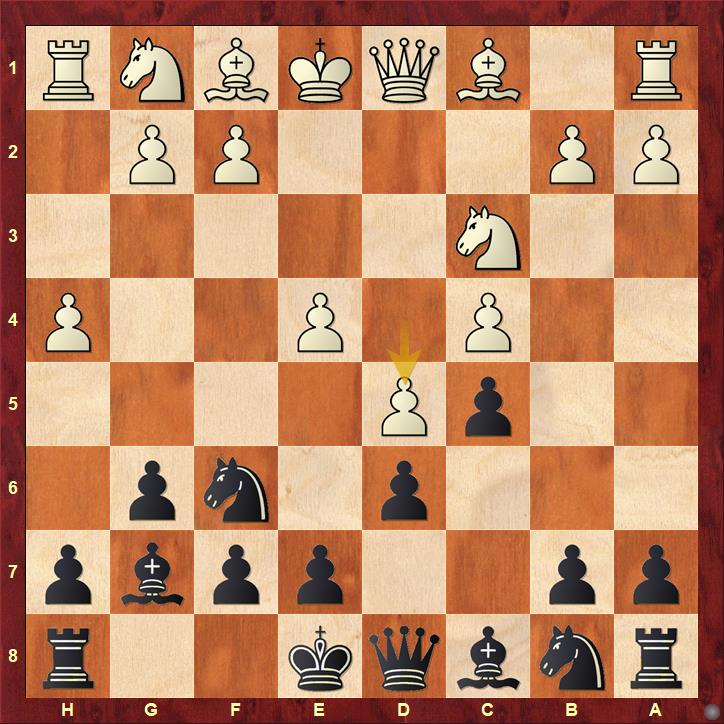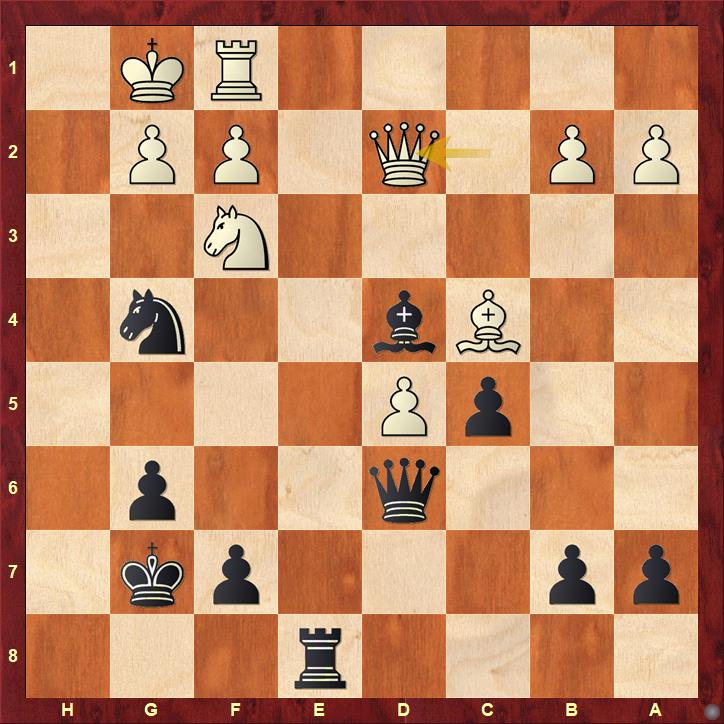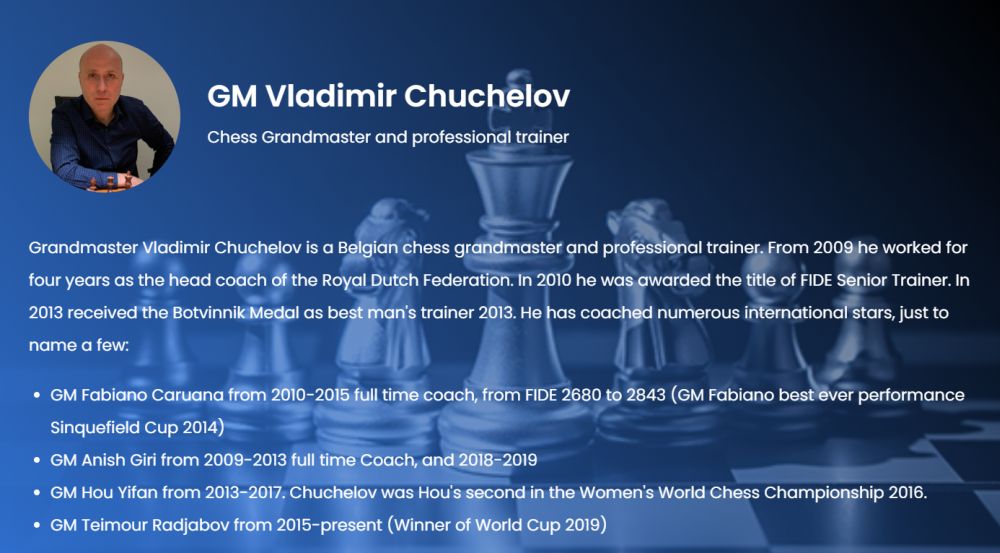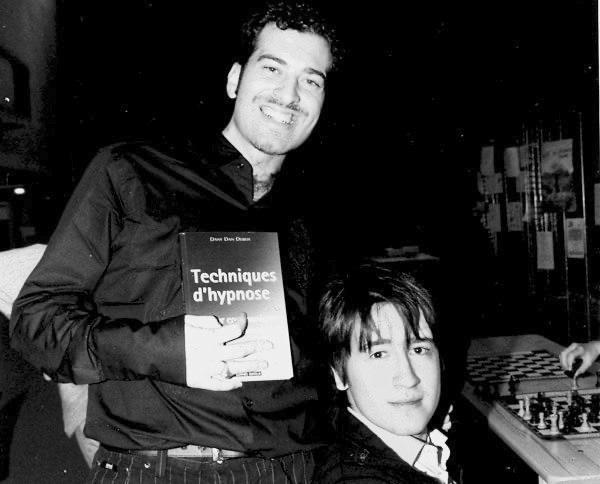In the 16th episode of ChessBase India's "Grandmaster Chess" series, Teimour joins our ever-genial host Sagar Shah and a group of chess-crazed comedians to present the viewers one of his many brilliancies with black, using the famed hypermodern line. In this write-up we give you a summary of this epic stream which lasted an astounding 2 hours and 19 minutes. The critical positions, like always, are posed to you as questions. Work through them all, and see how many you manage to get right.
Grandmaster Chess Episode 16: Teimour Radjabov's Immortal vs Kazhgalayev, 2005
The King's Indian Defence (KID) is the quintessential extremist opening. It can, perhaps once in a blue moon, lead to a solid positional struggle, but mostly it's known to be a weapon that is wielded only when one is desperate to strike with the black pieces. The King's Indian player is therefore used to positions where things hang by a thread. He revels in wild tactical complications and hopes to crush his opponent in ruthlessly sharp lines, where almost every move decides the fate of the game. "In King's Indian it's like the first six moves are always the same, and then nobody knows what's going on," says Radjabov at the start of the session. You have to keep finding various tricks to stay in the game. But in those moments you really have to know what you are doing, or else you might just get checkmated in ten moves."
Well, the list of grandmasters who understand the King's Indian Defense as well as Raja does, is indeed very short, and most definitely would end with just Maxime Vachier-Lagrave and Hikaru Nakamura on it, the only two players in the world perhaps of comparable strength and style. Back in the 80s and 90s, the great Garry Kasparov was the biggest exponent of the KID, but in the early 2000s, the opening saw a period of decadence when Vladimir Kramnik rose to prominence and devised solid ways to deal with it. It took some years for the opening to become fashionable again, and Teimour was one of the first players to breathe fresh life into it. He used it with great success against the who's who of the chess world, from Ponomariov to Shirov to Ivanchuk to Gelfand — just name it!

Teimour Radjabov was in a way the next big proponent of KID after Garry Kasparov, and incidentally, he, too, like Garry, is from the city of Baku. | Photo: Maria Emelianova
From his many brilliancies in KID Radjabov chose a relatively unknown and simple one to demonstrate in this session. It was from the 2005 FIDE World Cup played in the city of Khanty-Mansiysk in Russia. The player with the white pieces was the strong Kazakhstani grandmaster Murtas Khazgaleyev. In fact, this game was one of the rapid encounters in the tie-breaks after the players had already drawn their classical match 1-1.

Murtas Khazgaleyev was quite strong back in 2005. In addition to being a player, he was also a famed theoretician and analyst. | Photo: David Llada
The KID, the extremely tactical opening that it is, requires preparedness not only in terms of chess but also psychology—you simply can't hope to navigate through all the complications that entail it without being at your absolute best. Radjabov fortunately was in no need of motivation before this game that day. "In general I was in a very good mood before this game. Our classical match was tied 1-1, and here I was ready to strike, to be honest," he recalls. Khazgaleyev, himself a KID expert, employed a somewhat questionable system with the white pieces, perhaps hoping to catch Radjabov by surprise—but the gambit clearly backfired on him. Let us now get into the game proper!
Question 1 (at 16:35 in the video)

Position after 5.h4!?
5.Nf3, 5.f3, even 5.f4 are some of the popular choices for White in this position, but Kazhgaleyev lashed out his h-pawn. How should Black brace up for the incoming flank attack on the kingside?
The online database shows only 61 games played in this variation, the point of course is to create an early attack on the kingside—not the soundest choice for sure but one that certainly can stir up unpleasant problems if Black is out of depth. Solution? Well, often when your opponent starts taking risky decisions, the best course is sticking to the fundamentals, and the fundamentals dictate that Black must react to this advanced flank attack with counterplay in the center. Thus, 5...e5 and 5...c5 are the two main options here, Radjabov decided against closing down his dark-squared bishop and played the latter.
Radjabov clarified here that 5...e5 too is a perfectly playable option. It looks as though 5...e5 locks down the g7 bishop, but this is very typical in such positions, and experience has shown that the dark-squared bishop more often than not comes out as an extremely powerful piece once the position opens up with ...f5 and ...e4.
Question 2 (at 31:45 in the video)

Kazhgaleyev pushed forward d4-d5 gaining more space. Here's the second question already! How should Black proceed?
The principle is again the same: Black needs to hit the center. 6...e6 is what Radjabov played, but the hyper-aggressive 6...b5 too is an option here, going into Volga Gambit territory after 7.cxb5 a6 8.Qa5 etc. However, a normal developing move like 6...Nbd7, or just 6...h5 to stop White's advances on the kingside, are too slow.
Question 3 (at 49:43 in the video)

The immediate next decision to make is how to capture on e6. What would you play? 7...Bxe6 or 7...fxe6?
Biswa preferred fxe6 here, he wanted to consolidate the center more with pawns, and he also felt that the light-squared bishop wasn't doing much on the c8-h3 diagonal so opening up the f-file for the rook was much better. However, the right choice here is 7...Bxe6, this is what Radjabov played, and although this makes the d6 pawn appear backward and weak this is very typical in King's Indian. In fact, after Bxe6 the King's Indian player prepares to give up the d6 and c5 pawns to generate pure piece play.
Question 4 (at 56:28 in the video)

Speak of the devil and the devil is here! Bf4 came soon enough and now, as we have just discussed, Black must sacrifice d6 for activity. Ne8 is just not an option here, so what do you play?
With the impending Ng4 and h5, 10...Ne8 is an absolutely horrible move to play. The comedians went for 10...Qb6 which certainly looks decent, but for Radja 10...Re8 was the most natural reply.
Question 5 (at 1:05:01 in the video)

White had to castle in order to put his king to safety, this meant that he didn't have many attacking prospects on the kingside anymore. Can you guess the move Black played after 13.e5?
Although 13...Ng4 was played in the game, Radjabov thought 13...Nd7 is equally good in this position, so all the comedians were awarded full points here.
Question 6 (at 1:14:54 in the video)

Again Black must take a decision. How to capture on g6? What do the principles say?
Black really doesn't want to capture fxg6 here as that needlessly weakens the king by opening up the g8-b3 diagonal. Moreover, in principle, captures towards the center are better than captures away from it. 18...hxg6 is the move here and sure enough, all the comedians got this one right.
Question 7 (at 1:20:59 in the video)

Next, in this position, you can see that Radjabov has already maneuvered his queen to d6, and is looking directly at White's king. Kazhgaleyev played 21.Rfe1 here hoping to challenge Black's hold on the e-file. How did Raja respond?
Both Biswa and Vaibhav felt that using the open h-file in this position was important. 21...Kh7 was played with the intent of going 22.Rh8 next. 21...Re5 too was made with the same idea. But it was Anirban who got the best move in the position: 21...Bd4
Question 8 (at 1:29:18 in the video)

...and now Biswa and Vaibhav could get hold of the h-file with ease. Can you see how? What did Black play?
Everyone got this one right. 23...Kg7 with the idea of going Rh8 next works perfectly now. Radjabov also pointed out that at this moment even 23...Re5 could be a strong move. Note that the rook on e5 can't be taken as after Qxe5 checkmate on h2 becomes inevitable, moreover against moves like Nxd4 as well Black has nasty tricks like Re2!
Question 9 (at 1:30:52 in the video)

Black has already amassed a large advantage, but of what use is an advantage if you can't convert it into a win? Now, it's actually time for Black to strike a blow, get into your calculation mode!
Of course, 24...Rh8 also wins here, but Radjabov went for the flamboyant 24...Re3!! This obviously threatens Rxf3 followed by Qh2# and you can't really take the rook because of the bishop on d4.
Question 10 (at 1:40:33 in the video)

Many roads lead to Rome from here! Radjabov chose something that he said Anand would likely also play in this position. Can you guess what that is?
Well, 25...Rxf3 26.gxf3 Qg3+ 27.Kf1 Nh2+ should also be a forced win in this position. The move played in the game, 25...Qf4, doesn't look as forcing but actually is equally powerful and tightens the noose around White's neck. More importantly, to make such a move, you hardly have to calculate anything.
Anirban's move, unfortunately, complicates matters. 26.Qxf2 is obviously not possible because of 26...Rf3, but after 26.Nxd4 things aren't so clear.
Question 11 (at 1:51:47 in the video)

Final question: how did Radjabov finish off the game?
The move here was found by all three comedians but it was Anirban who finished off the final calculation and this helped him edge out Vaibhav just by a point in this session. Yes, the move played here was obviously 28...Nh2+, and this made White resign. The point is after 29.Ke2 Qxf3+ 30.Ke1 Qh1+ 31.Ke2 Qe4+ Black will be forced to give up his queen.
 On the above replayer you can go through the moves of the game. Note that you can maximise the board, or click on the round arrow icon below the board to "flip".
On the above replayer you can go through the moves of the game. Note that you can maximise the board, or click on the round arrow icon below the board to "flip".
Clicking the fan icon will start the built-in engine, which can be used to answer any "why not" and "what if" questions that arise.
I hope to have given you good examples with the article and the games shown in it to underline the relevance of studying the classics! I look forward to feedback!
Let us know in the comments section below, how you enjoyed this game and how many points you scored! Want more masterclasses like this? Do checkout Radjabov's The Chess Stars Academy where some of the best chess players and trainers in the world are coming together to offer high-class training. We end this article with a brief description of this unique learning platform.
The Chess Stars Academy
Visit: chessstars.az
The Chess Stars Academy is the brainchild of Teimour Radjabov. He has built it with his two long-time associates Grandmasters Vladimir Chuchelov and Igor Nataf. Currently, Chuchelov is offering his legendary course on "Strategic Balance" which he has developed through a period of ten long years whilst working with some of the top players in the world.

A brief profile of Grandmaster and trainer Vladimir Chuchelov | Source: chessstars.az
The Strategic Balance is a comprehensive course that addresses all aspects of chess from calculation to positional and dynamical understanding of the game. It comprises highly specialized and instructive material, introducing a very different approach to position evaluation, decision making, and the game itself. If you want to know more about this seminal training course do read more about it in this article.
The other distinguished trainer in the academy is Igor Nataf, who like Chuchelov has also been a long-time trainer of Radjabov's. Currently, he is offering a course on the King's Indian Defense. We have spoken about Radjabov's success with the KID earlier in this article, much of the credit for this success actually also goes to Grandmaster Nataf who has been instrumental in preparing Raja in this super-complex opening.

A brief profile of GM Nataf | Source: chessstars.az

An old picture of Nataf and Radjabov together. Were they learning hypnosis along with chess back then?
Of course, it goes without saying, that both trainers will be joined by Raja himself from time to time for intensive master-classes. We leave you with some more links below to know more about this academy and the people behind them.































 On the above replayer you can go through the moves of the game. Note that you can maximise the board, or click on the round arrow icon below the board to "flip".
On the above replayer you can go through the moves of the game. Note that you can maximise the board, or click on the round arrow icon below the board to "flip".







